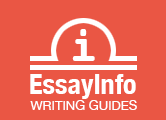The following guidelines treat frequent questions about eight essential uses of the comma.
First, in a series of three or more terms with a single conjunction, use a comma after each term: She opened the closet, grabbed a coat, and picked up an umbrella. In a complex series of phrases, the serial comma before the final conjunction aids readability. In a simple series, the comma is optional before the conjunction: The van is economical, roomy and dependable. Also, put a comma before the concluding conjunction in a series if an integral element of the series needs a conjunction: He likes jazz, rock, and rhythm and blues. Don't put a comma before the first item in a series or after the and in a series.
Second, use a comma to join two independent clauses with a conjunction. An independent clause is a group of words that could stand on its own as a complete sentence; it begins with its own subject. The most common conjunctions are but, and, for, nor, or, so and yet: The council's Water Resources Committee will go over the resolution Jan. 12, and the full council is scheduled to act Feb. 11. Don't create run-on sentences by combining two or more independent clauses with only commas. Either insert conjunctions after the commas or break the clauses into separate sentences.
Third, use a comma to separate an introductory phrase or clause from the rest of the sentence: After graduating from college, he joined the Peace Corps. It may be omitted after short introductory phrases (less than three words) if no ambiguity would result: On Thursday the Kennewick City Council will decide the issue. When in doubt, use the comma, especially when it separates two capitalized words.
Fourth, enclose parenthetic expressions between commas. Parenthetic expressions are word groups that are not essential to the meaning of a sentence. If a parenthetic expression is removed, the sentence would still make sense: The social services manager, who toured the Snoqualmie Valley last week, will make her recommendations today. They took one of their sons, Leif, to the concert. His wife, Donna, is a middle school teacher. As shown in the examples, commas always go both before and after a parenthetic expression within a sentence. If you'd prefer to stress a parenthetic phrase, put it between dashes; you can play down such a phrase by placing it between parentheses.
Also use commas to set off a person's hometown when it follows the name: Rachel Solomon, Danbury, opened a new restaurant. If using a person's age, set it off by commas: Tom O'Rourke, 69, opened a new restaurant.
Do not use commas to set off an essential word or phrase from the rest of a sentence. Essential words and phrases are important to the meaning of a sentence: They took their daughter Jennifer to school. Their son Nils works at Ticketmaster. (They have more than one daughter and more than one son.)
Fifth, use commas to set off words and phrases such as however, meanwhile, in fact, in addition, moreover, nevertheless, as a result, thus, therefore, for example, finally and in other words. Usually, place a comma after such expressions when they begin a sentence, and place commas before and after the expressions when they are within a sentence.
Sixth, use commas to separate a series of adjectives equal in rank. If the adjectives could be rearranged without changing the meaning of a sentence or if the word and could replace the commas without changing the sense, the adjectives are equal: A sleek, new car. A thick, black cloud.
Use no comma when the last adjective before a noun outranks its predecessors because it is an integral element of a noun phrase: a silver articulated bus.
Seventh, use a comma to set off a direct one-sentence quotation within a paragraph: Theodore Roosevelt said, "It's not the critic who counts." Use a comma before the second quotation mark in a quotation followed by attribution: "No comment," said Jerry Carson.
And eighth, use a comma to separate the parts of numbers, dates and addresses. Use a comma for figures higher than 999: More than 5,000 people attended the event.
Use commas to set off the year in complete dates: The department released its report Nov. 16, 2002, for public review. But don't separate the month from the year when not using a date. They held their first retreat in January 1994.
Use commas to set off cities from names of states or nations: She went to Vancouver, Wash., to tour the bridge retrofit program. He traveled to Paris, France, on vacation.

